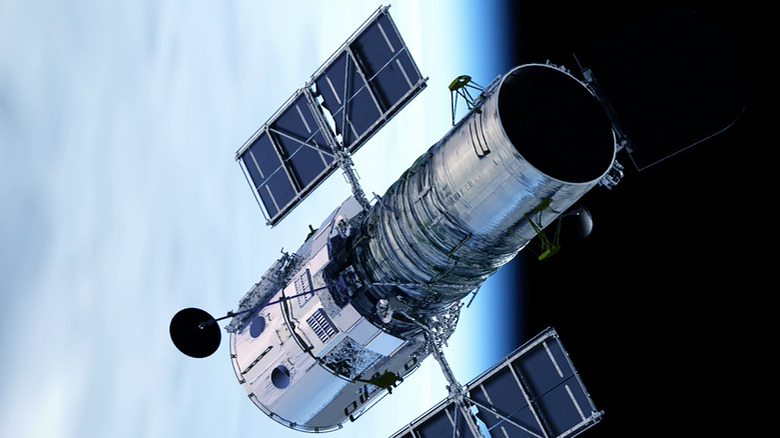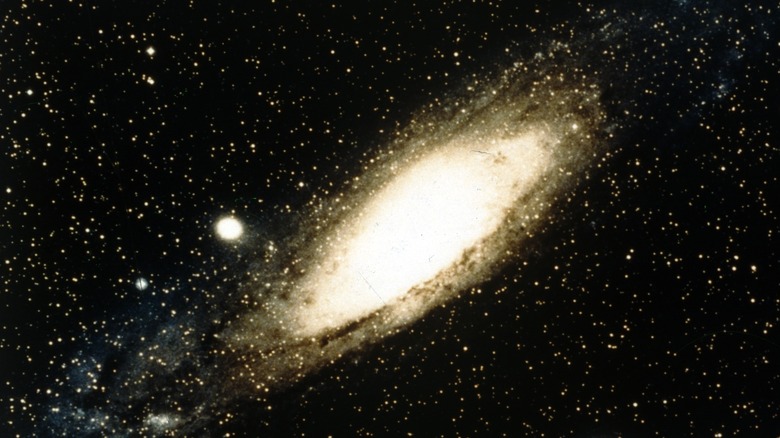This Might Be The Oldest Galaxy In The Universe
Space is vast, and the distances between things are almost incomprehensible. According to Universe Today, it takes light from our own sun — the one that gives us warmth to live — eight minutes to reach us on Earth. Indeed, when scientists send out probes that explore the outer planets of the solar system, they have to plan for lags in communication since the instructions can take many minutes or hours to travel from Earth to the probe. This kind of makes that five-minute walk to the supermarket pale in comparison, doesn't it?
It gets even more mind-boggling once we leave the confines of our solar system. Per EarthSky, Alpha Centauri, our closest neighboring star, is located about 25 trillion miles from Earth and 4.3 light-years from its sun. An initiative called Breakthrough Starshot hopes to reach it within 20 years, but nobody knows if this is even possible. The Andromeda Galaxy, our closest galaxy — which is actually on a collision course with our own Milky Way galaxy — is 2.5 million light-years away, via Astronomy. That's far, but scientists have found what they believe is the most distant galaxy, and it supposedly is a brain-melting 13.4 billion light-years away.
This galaxy makes the Andromeda Galaxy seem nearby
The galaxy — which has the decidedly non-sexy name of GN-z11 — was tracked by University of Tokyo astronomer Nobunari Kashikawa and his team, via Space.com. How are they able to calculate the distance between us and GN-z11? It's not like they use a tape measure — they take a look at what its light spectrum looks like. If it is far away, then it will likely be at the high end of the red spectrum. The team combined this knowledge with the study of chemical signatures in the light that was emitted from the galaxy. The main area of interest for them was ultraviolet light, since the Hubble telescope, which orbits the Earth, saw this frequently from the galaxy.
As mighty as the Hubble is, Kashikawa and his staff also had to enlist the aid of a spectrograph called MOSFIRE in Hawaii to be able to see all the ultraviolet that they needed to make their determination on how far GN-z11 was. It's not set in stone — other observations need to be made — but it looks like it is the most distant galaxy at 13.4 billion light-years away.
Remember, this is supposed to be the furthest detectable galaxy. But astronomers are always working on new ways to peer out into the universe, and they will hopefully be launching the James Webb telescope in the near future. Per NASA, researchers believe this device will be able to look even further out than the Hubble telescope thanks to its larger field of view. Indeed, GN-z11 might be relegated to lower down the list of furthest detectable galaxies.

